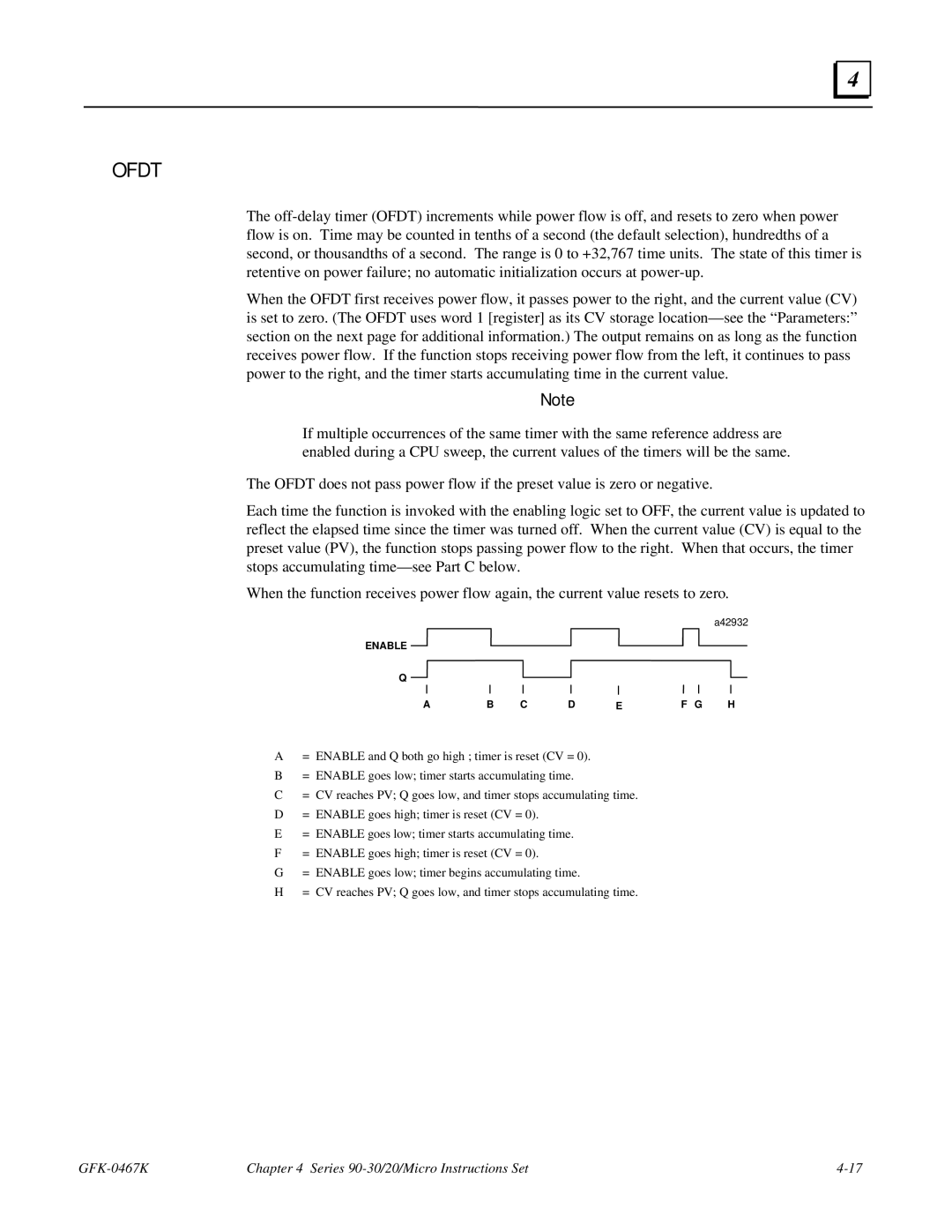
4 |
OFDT
The
When the OFDT first receives power flow, it passes power to the right, and the current value (CV) is set to zero. (The OFDT uses word 1 [register] as its CV storage
Note
If multiple occurrences of the same timer with the same reference address are enabled during a CPU sweep, the current values of the timers will be the same.
The OFDT does not pass power flow if the preset value is zero or negative.
Each time the function is invoked with the enabling logic set to OFF, the current value is updated to reflect the elapsed time since the timer was turned off. When the current value (CV) is equal to the preset value (PV), the function stops passing power flow to the right. When that occurs, the timer stops accumulating
When the function receives power flow again, the current value resets to zero.
a42932
ENABLE ![]()
Q
AB C D EF G H
A= ENABLE and Q both go high ; timer is reset (CV = 0).
B= ENABLE goes low; timer starts accumulating time.
C= CV reaches PV; Q goes low, and timer stops accumulating time.
D= ENABLE goes high; timer is reset (CV = 0).
E= ENABLE goes low; timer starts accumulating time.
F= ENABLE goes high; timer is reset (CV = 0).
G= ENABLE goes low; timer begins accumulating time.
H= CV reaches PV; Q goes low, and timer stops accumulating time.
Chapter 4 Series |
